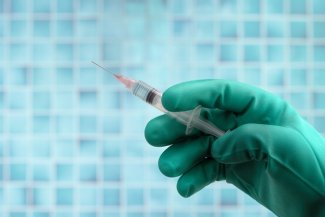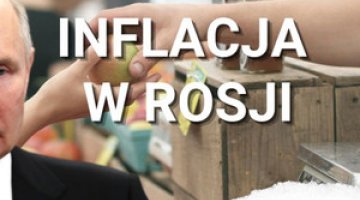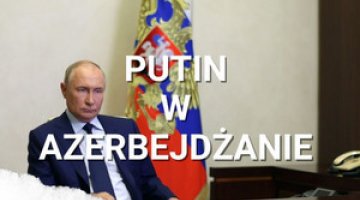Sputnik V: research, production, vaccination campaign and export

In December 2020, Russia launched a mass-scale action for vaccinating its citizens with the domestically produced Sputnik V coronavirus vaccine. It was only on 2 February 2021 that the Gamaleya Institute, which developed the vaccine, announced the results of its phase-III clinical trials which showed that the vaccine’s efficacy rate was more than 91%. The way the Russian leadership reports on Sputnik V’s production and rollout is chaotic and the published data is incompatible and non-transparent. Only rough information has been shared regarding the number of vaccinations performed thus far: the Ministry of Health has failed to provide precise figures and, according to estimates by the Gamaleya Institute, the immunisation campaign has so far covered 1.5–2 million citizens. However, these figures are inconsistent with the data reported by the individual regions.
Ambitious plans regarding the export of Sputnik V, involving hundreds of millions of doses, had to be modified significantly. Although the preparation has by now been registered in 20 countries, the exported quantities are relatively modest: around 1.1 million doses (of both components of the vaccine which differ from each other). Moscow is planning to safeguard the execution of contracts signed with foreign clients by manufacturing Sputnik V outside Russia. However, so far Kazakhstan is the only country to have launched production of the vaccine in its domestic facilities. The problems with the vaccine’s distribution in Russia itself are due to the fact that it needs to be maintained at a temperature not exceeding -18°C. Although a freeze-dried variant of the vaccine, intended to be stored at a temperature ranging from +2 to +8°C, was registered in mid-January, only one pharmaceutical facility in Russia is capable of producing it.
Testing Sputnik V
On 2 February 2021, the prestigious medical journal The Lancet published the preliminary results from the Gamaleya Institute of Sputnik V’s phase-III clinical trials (the final results are to be published in the coming months). The body of information on the vaccine available thus far was mainly limited to the report published in The Lancet in September 2020 following the completion of phases I and II of the clinical trial. Those phases came under criticism from foreign medical experts due to insufficient data precision and the fact that the group of subjects involved in it was too small. Information on the course of the phase-III clinical trial was only provided in incomplete reports published by the Gamaleya Institute. The article in The Lancet indicates that in Moscow (between 7 September and 24 November 2020) 19,964 individuals took part in the trial, out of whom nearly 15,000 were administered both of the different doses of Sputnik V, and the remaining nearly 5,000 individuals received a placebo. On this basis, the vaccine’s efficacy was determined at 91.6%. The institute announced that the vaccine was well-tolerated by the patients and that the death of four individuals involved in the trial (three of them had received Sputnik V and one had received a placebo) was not vaccination-related. Publication of the results was welcomed by the international medical community and by politicians, including Angela Merkel. This may be significant in the context of the involvement of German institutions in Sputnik V’s registration in the EU and its possible production in Germany. Josep Borrell, the High Representative of the European Union for Foreign Affairs and Security Policy, expressed his hope that Sputnik V would be granted marketing authorisation in the EU.
It should be noted that the initial plan had been to have 40,000 individuals vaccinated in the phase-III clinical trial of Sputnik V. However, on 25 December 2020, following the vaccination of more than 23,000 subjects, the Ministry of Health of the Russian Federation decided to end the trial. The ministry officials explained that they did not want to expose the placebo-receiving subjects to the risk of contracting the virus and developing COVID-19, all the more so because a mass-scale vaccination campaign has been ongoing in Russia since 5 December 2020. In addition, it is not clear whether the trial was indeed double-blind (in a double-blind trial neither the subjects nor the medical staff know who receives the actual vaccine and who receives a placebo ). This is due to the fact that, according to information shared on social media, some of the trial participants decided to have themselves tested for SARS-CoV-2 antibodies. In addition, the media reported instances involving individuals who had tested positive for SARS-CoV-2 antibodies qualifying for participation in the Sputnik V trial.
The vaccine’s success has encouraged the Gamaleya Institute to conduct a clinical trial of a new variant of the preparation, i.e. the Sputnik Light vaccine. On 8 January 2021, the Ministry of Health of the Russian Federation issued a permit to conduct a phase-III clinical trial involving 150 volunteers (the trial will last until the end of 2021). Sputnik Light is de facto the first of the two components of Sputnik V. The Gamaleya Institute is expecting that individuals vaccinated with this first component alone will develop immunity to SARS-CoV-2 lasting three or four months, assuming that the vaccine’s efficacy rate is around 85%. After that time, these individuals can have themselves vaccinated with the other component. According to the Gamaleya Institute, this is a compromise solution enabling the immunisation of a considerably larger group, which is important especially in countries affected by a high mortality rate due to COVID-19, as Sputnik Light is intended for export.
The production and export of Russian vaccines
According to information provided on 29 January 2021 by Deputy Prime Minister Tatyana Golikova, 8.2 million doses of Sputnik V have been produced in Russia thus far. A week before that, Russia’s Minister of Trade and Industry Denis Manturov announced that by the end of January 2021 Russian pharmaceutical companies would be expected to manufacture 7 million doses of the vaccine. In February the production volume was expected to increase to 11 million doses and in March to 15 million . The information provided by the Russian government cannot be verified because the pharmaceutical companies involved in the vaccine’s production do not publish their own data. At present, in Russia six pharmaceutical companies are authorised to produce Sputnik V: Medgamal owned by the Gamaleya Institute (the vaccine’s developer), and the following privately-owned companies: Generium, Lekko, Pharmstandard-UfaVITA, Biocad and Binnofarm (although as regards the latter, it is not known whether it has indeed launched production of the vaccine). Another two pharmaceutical companies are expected to commence production of Sputnik V in February (see Table 1 in the Appendix).
The end of January 2021 saw the launch of Sputnik V’s production outside Russia. On 27 January 2021, the Karaganda Pharmaceutical Complex in Kazakhstan started production of the first batch of the vaccine involving 90,000 doses (this includes both components of the vaccine). In addition, in mid-January the company GL Rapha from South Korea manufactured a test batch of Sputnik V and sent it to the Gamaleya Institute for a quality check. If it is found to meet the required standards, its production could start in Korea in mid-February. Large quantities of the vaccine will be produced in India and Brazil, although so far Sputnik V has not been registered in those countries. The Russian authorities have also launched negotiations with China, however, no contract has been signed so far. In addition, Russia has been making attempts to start the vaccine’s production in the EU, in particular in Germany and Hungary. At present , no contract has been signed there either. Alongside this, the German company IDT Biologika, which is ready to make its own production capacity available to foreign companies (AstraZeneca is currently using it), is conducting talks with the Russian side.
It is assumed that Sputnik V manufactured outside Russia will be intended to cover the demand resulting from the already signed export contracts. At present, at least 20 countries across the world are waiting for mass-scale supplies of the Russian vaccine. According to information provided by Russian distributors, the preparation has by now been registered in these countries (the list of confirmed registrations is presented in Table 2 in the Appendix). Outside Russia, Sputnik V was registered in a fast-track procedure which in most cases was carried out without the vaccine undergoing additional tests. The export supplies effected thus far are relatively modest – the biggest batch (around 1 million doses) was sent to Argentina. Interestingly, information regarding export of the vaccine mainly comes from its recipients. The Russian government is reluctant to reveal the details on foreign supplies, likely in an attempt to avoid domestic public discontent, since the data available suggests that the amount of vaccine dispatched to foreign countries was higher than to Russian regions (excluding Moscow).
According to the government, around 50,000 doses of another Russian vaccine, EpiVacCorona, developed by the Vector Centre based in Novosibirsk, were manufactured in December 2020. This vaccine is produced by a pharmaceutical company owned by Vector, while the protein which is necessary for its production is provided by Gerofarm, a company based in Saint Petersburg. Plans have been made for the large-scale production of this vaccine to commence in February 2021.
The process of vaccine distribution
Although in recent weeks Russia has been increasingly effective in overcoming the barriers regarding the mass production of Sputnik V, the method of supplying the vaccine to its recipients continues to be a major problem. The Russian system for distribution of medicinal products, which was in place before the pandemic, envisages their transport at a temperature ranging from +2 to +8°C (which is a globally-recognised standard). The EpiVacCorona vaccine developed in Novosibirsk was designed with this storage temperature range in mind, which means that its distribution is likely to proceed smoothly. However, as regards Sputnik V, due to the fast pace of its development, initially no tests of its stability at a higher temperature were carried out. As a consequence, in August 2020 Sputnik V was registered as a vaccine that requires storing at a temperature not exceeding -18°C. It was only on 21 January 2021 that, on the basis of research results presented to it, the Ministry of Health issued its official authorisation for storing the freeze-dried variant of Sputnik V at a temperature between +2 and +8°C. The minister of Health announced that both variants of the vaccine would be marketed. However, at present only the frozen variant is available. It will make up a major portion of vaccine supplies in the immediate future. This situation has forced the Russian leadership to set up a brand new, costly vaccine distribution system. On 3 December 2020, following several months of work, the Russian Federal Service for Surveillance on Consumer Rights Protection (Rospotrebnadzor) officially approved Sputnik V’s transport and storage conditions.[1] However, meeting them requires investments in storage facilities, freezers and thermal containers, which are difficult to implement, especially in Russia’s poorer regions. This is the reason behind the rather modest progress in the vaccination campaign in Russia’s regions (see Part I of the Appendix).
Sputnik V’s main distributor in Russia is the Immunotekhnologii company established in May 2020 by the state-controlled Sberbank. Due to the shortage of deep-freeze storage facilities in Russia, the company built several near Moscow. The entire process of the vaccine’s domestic distribution has been centralised. First, the vaccine produced in various pharmaceutical facilities is sent to the storage facility near Moscow, where representatives of the Gamaleya Institute carry out quality checks. Next, the vaccine is distributed to vaccination points, mainly by road.
Progress in the vaccination campaign
The problems hindering the production of the planned quantity of Sputnik V and the organisation of its distribution are affecting the pace and scale of the vaccination campaign in Russia. The Russian government made several attempts to announce the launch of a mass-scale vaccination campaign against COVID-19. The first such announcement was made in early December 2020 and was de facto forced through by President Vladimir Putin, who demanded that the ministers should launch the vaccination process as soon as possible. Despite doubts voiced by a portion of Russian officials, Moscow was the first city to announce the commencement of its “mass-scale vaccination campaign” (on 5 December) and several other regions followed suit two days later. On 15 December 2020, Minister of Health Mikhail Murashko announced that the vaccination campaign covered all of Russia’s regions. In fact, it was being carried out on a very limited scale.
On 18 January 2021, following another direct order from President Putin, the launch of a “large-scale vaccination campaign” was announced in Russia (it should be noted that Russian officials are using the two terms: “mass-scale” and “large-scale” interchangeably and – as it seems – tend to confuse one with the other). This campaign involves the voluntary vaccination of all adult citizens (aged 18 and older), who are not included in any high-risk group.
At present, according to figures provided by the Ministry of Health, a total of around 3,100 vaccination points are operating in Russia. Since 31 January 2021 citizens can book vaccination appointments using the Public Services Portal. At present, Russian citizens are vaccinated with Sputnik V; the other preparation – EpiVacCorona – is planned to be included in the vaccination campaign in March. According to information provided by the government, as on 26 January 2021 the regions received a total of 2 million doses and another 2 million are ready for shipment. Following President Putin’s demand that the vaccination campaign should be carried out on a scale similar to that of the flu vaccination campaign (in the recent flu season 68 million citizens, i.e. almost half of Russia’s population, received a flu jab), the government announced that additional vaccination points would be opened, including in shopping centres in Moscow, and that privately-owned companies from the medical sector would be engaged in this process. Oddly enough, Russian government officials prefer to voice forecasts on vaccine production, usually involving large quantities being produced and delivered to regions, while no precise and comprehensive data on the actually manufactured and delivered batches of the vaccine is available.
The authorities offer no regular information updates regarding the number of individuals who have been vaccinated. According to estimates prepared by the Gamaleya Institute (as on 29 January 2021), this number is around 2 million. More precise figures are reported by Russia’s biggest cities. In Moscow, which is the leader in the vaccination effort, by the end of January the first dose of the vaccine was administered to more than 320,000 individuals (out of the city’s 12 million residents), in Moscow Oblast by 4 February this figure was 110,000 individuals, and in Saint Petersburg it was to 86,000 individuals (in January the vaccination campaign was halted in this city due to a vaccine shortage). Reports from other regions suggest that the vaccine supplies they received were insignificant. The Republic of Buryatia, whose population is around 1 million, received 18,400 doses, enabling it to vaccinate only high-risk groups. By 4 February 2021, 14,800 residents of this republic received their first dose of the vaccine; the supply of another 41,000 doses is expected by the end of February. In Oryol Oblast (734,000 inhabitants), the first dose of the vaccine was administered to 6,300 individuals. Novosibirsk Oblast received 30,000 doses of the vaccine (for its 2.8 million inhabitants). In Kaliningrad Oblast, which was listed by the minister of Health among the best-performing regions as regards the vaccine rollout, by February 2021 the first dose had been administered to a mere 8,300 individuals (out of nearly 1 million inhabitants). The oblast authorities have admitted that there is a vaccine shortage and that a larger-scale vaccination campaign will likely be launched in February. Many regions fail to provide precise figures. The official statement claiming that 2 million individuals have received the vaccine is thus likely exaggerated.
Diverging stances on the so-called COVID passports
Russian residents who have been vaccinated against COVID-19 are eligible to be issued relevant certificates. Since 1 January 2021, these certificates have been available for download from the Public Services Portal in the form of a document with a QR code. The available information regarding these certificates, including their purpose, is unclear and there have been numerous reports in the media that the system is not working efficiently. Some of the vaccinated individuals received their QR code automatically when they were administered the second dose of the vaccine, while others have problems receiving it. Many regions issue old types of vaccination record cards without a QR code. According to the most recent figures provided on 18 January, the number of vaccination certificates issued so far is a mere 34,000. In addition, there have been reports suggesting that online platforms are being used for the illegal trade in QR codes confirming the vaccine’s administration.
The vaccination certificates are frequently and colloquially referred to as “COVID passports”. A debate has been ongoing in Russia for some time regarding these certificates and the possible preferential treatment they would entitle their bearer to (for example regarding foreign travel and access to various services). The debate participants include politicians, officials and experts involved in vaccine production and distribution. In December 2020, some of these experts (including Aleksandr Gintsburg, director of the Gamaleya Institute, and Kirill Dmitriev, head of the Russian Direct Investment Fund) spoke in favour of introducing this quasi-passport. The Republic of Bashkortostan was the first region to announce its plan to introduce the “passports”. However, in January 2021 numerous prominent Russian politicians and human rights defenders protested against this plan citing its discriminatory aspect (a similar opinion is shared by the World Health Organization). Most Russians (59%) are also against these “passports”, while a mere 12% are in favour.
At the beginning of this year, President Putin ordered the government to work out its position on this matter, including on whether the “COVID passports” would be recognised abroad, and to present it by 20 January. However, the government has failed to present any binding conclusions and merely offered a general statement saying that it is conducting international consultations regarding recognition of the “passports”. On 24 January 2021, Deputy Prime Minister Tatyana Golikova, who is responsible for social affairs, said that any agreement on this issue seems difficult to reach due to “a large number of nuances”. The authorities of Bashkortostan, who had previously backed the plan to introduce these “passports”, now modified their position and announced that “certificates” will be introduced instead (which means that it will come down to renaming them). On the one hand, the Russian leadership’s inconsistent attitude towards the “passports” demonstrates how complex and multi-faceted this issue is and, on the other hand, it exposes the drawbacks of the centralised decision-making process in Russia, especially during the pandemic. President Putin tends to issue orders to government officials regarding the fight against the pandemic with no prior consultations and – it would seem – with little knowledge of the unique and complex nature of the problem. As a consequence, many of these orders have turned out to be difficult or impossible to carry out and never materialised. One example is the president’s demand that a mass-scale vaccination campaign should be carried out. In practice, Russia proved unprepared for such an effort, in part due to a vaccine shortage.
The text was completed on February 9, 2021.
APPENDIX
Sputnik V’s distribution system
Before the end of January, the company Immunotekhnologii opened three deep-freeze storage facilities it had built near Moscow, which can hold a total of 10 million doses of Sputnik V. In addition, the company decided that a major portion of the vaccine will be transported by road. This is due to the fact that rail transport takes too long and there is no guarantee that the cargo’s required temperature could be maintained. Initially, air transport was considered. However, it proved too costly. Air carriers are reluctant to assume the risk associated with transporting a very expensive cargo and are ready to transport only small batches of the vaccine. In addition, the facilities and equipment available at airports do not enable the carrier to maintain the cargo’s required low temperature.
As a consequence, a decision was made to put the vaccines in thermal containers (-20/-21°C, each can hold around 5,000 doses) alongside dry ice (-70°C). The containers will then be loaded onto refrigerator trucks. In addition, these trucks can be used as provisional vaccine storage facilities in regions where no such facilities are available on the spot. Media reports suggest that since mid-2020 the Gamaleya Institute has purchased and leased refrigerating units manufactured by the American company Thermo King, in order to mount them on trucks. Another important problem involves meeting the demand for thermal containers. Although Russia has six companies involved in the production of thermal containers, before the pandemic they mainly produced containers that enable the standard temperature range to be maintained, i.e. between +2 and +8°C. As a consequence, they were forced to modify their production activities, which some of them were reluctant to do, fearing a rapid decline in the demand for deep-freeze containers due to the planned rollout of the Vector-made vaccine which can be transported at a temperature between +2 and +8°C.
Table 1. The production of Sputnik V





Table 2. Registration and export supplies of Sputnik V





[1] Постановление Главного государственного санитарного врача Российской Федерации от 03.12.2020 № 41 “Об утверждении санитарно-эпидемиологических правил СП 3.1.3671-20 «Условия транспортирования и хранения вакцины для профилактики новой коронавирусной инфекции (COVID-19) Гам-Ковид-Вак»”, www.publication.pravo.gov.ru.




